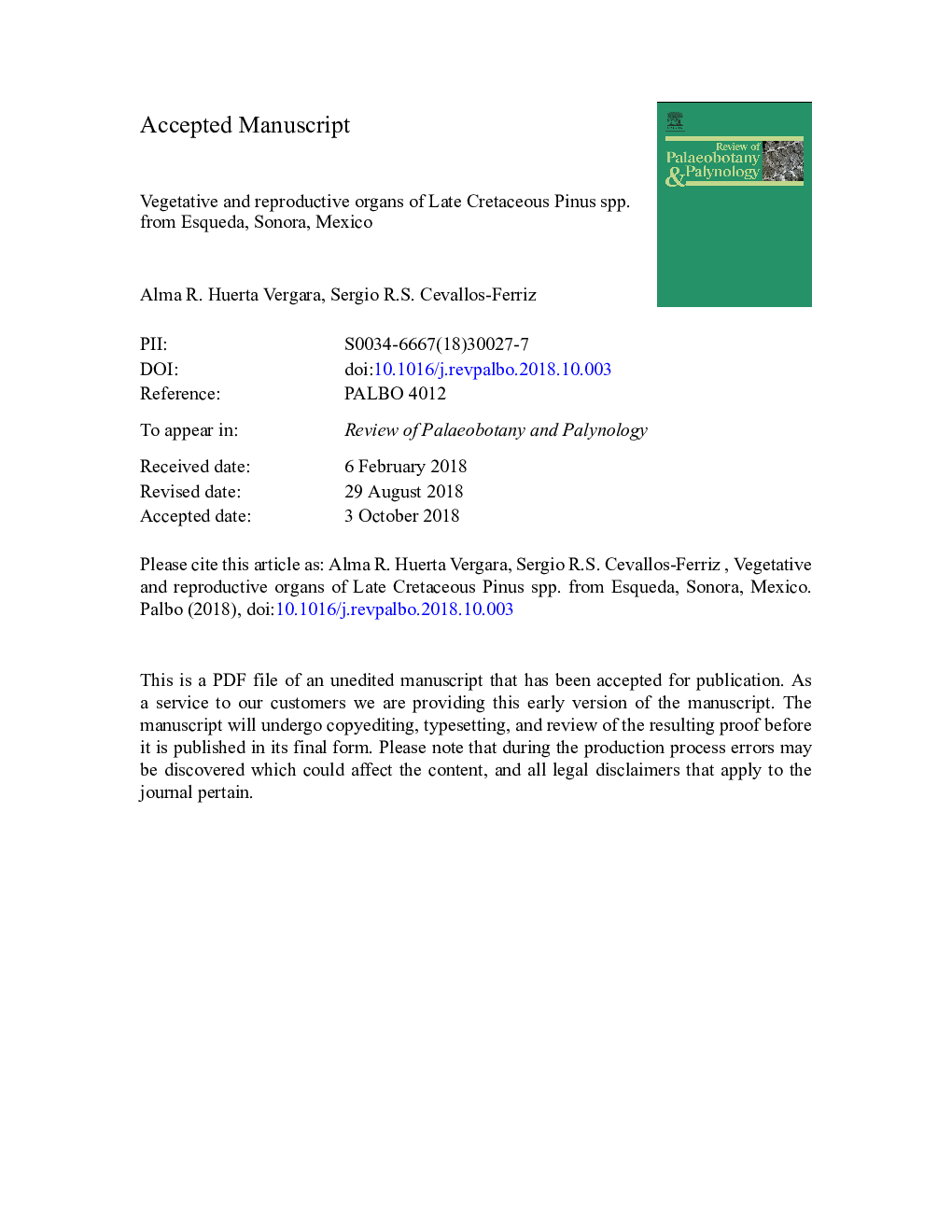| Article ID | Journal | Published Year | Pages | File Type |
|---|---|---|---|---|
| 11262852 | Review of Palaeobotany and Palynology | 2018 | 28 Pages |
Abstract
The fossil record of conifers in Mexico is poor and scattered. It is restricted to the Mesozoic in northern Mexico and becomes younger towards Southern and Central Mexico. This paper describes and identifies Pinaceae conifers from Late Campanian (± 72â¯Ma) rocks near the town of Esqueda, Sonora. Interpretations are based on leaves and an ovulate cone preserved as impression/compression fossils with small permineralized areas. Morphological characters observed in the leaves (leaf type, margin, venation, apex, base and phyllotaxy), branch (leaf scars), and leaf anatomy (permineralized areas), as well as the morphology of a female cone (ovuliferous scales), suggest affinity of the new fossil material with Pinus sp. A single vascular bundle in the leaves suggests affinity to the section Strobus, while the dorsal umbo with conical processes in the cone scales relates them to the section Pinus. Considering that the new fossils grew in the same type of plant, they would represent the earliest and most complete Pinaceae of Mexico and would confirm the presence of a third section within the genus, previously documented only from the Middle Eocene of Canada. Thus, they extend the historical and geographical range of Pinaceae in America.
Related Topics
Physical Sciences and Engineering
Earth and Planetary Sciences
Palaeontology
Authors
Alma R. Huerta Vergara, Sergio R.S. Cevallos-Ferriz,
